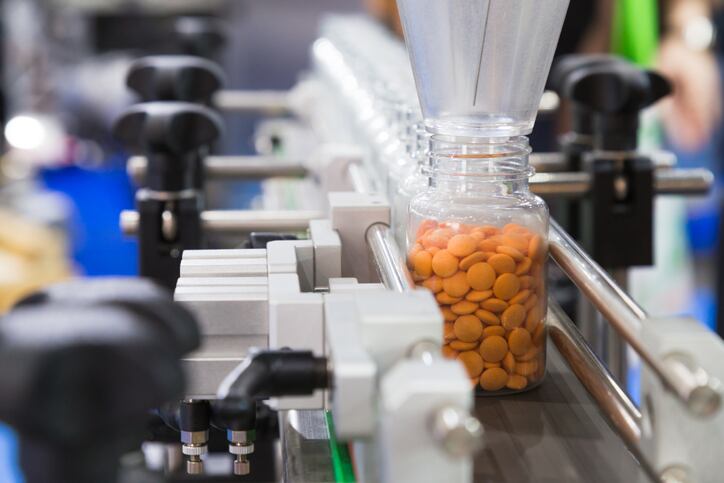The paper, which summarizes the information presented at a toxicology meeting last year, was published recently in the journal Regulatory Toxicology and Pharmacology. It was taken from presentations at the 2019 annual meeting of the Society of Toxicology, which took place in Baltimore, MD.
The meeting focused on the state of science concerning potential interactions between natural products and drugs. The authors included experts from the University of Alabama at Birmingham, the University of Washington and Washington State University as well as an employee of Procter & Gamble and a representative of the National Toxicology Program (NTP) at the US Food and Drug Administration.
Focus on unknowns and potential risk
As is usual in toxicology studies, the authors were focused on potential risk. In their view there is insufficient evidence about the pharmacological properties of most natural products as well as uncertainty about their precise makeup to make definitive statements about their safety when combined with pharmaceuticals.
“Standardized protocols and in vitro assays for predicting and mitigating NP-drug interactions and adverse events have not been established and dedicated clinical studies may be prohibitively expensive. Additionally, some NPs contain unknown and uncharacterized constituents or adulterants that can place consumers at great risk,” they wrote.
Even with that as an opening statement, and the seemingly bombastic headline (which reads in part: “‘Natural’ is not synonymous with ‘Safe’”), the paper gives a balanced view of the potential issues, according to Jim Griffiths, senior vice president of international and scientific affairs for the Council for Responsible Nutrition.
“The paper is very data heavy,” Griffiths told NutraIngredients-USA. “It would be a hard read for those who are not up on the nuances of things like cytochrome induction. But my top line is that it adds to the body of knowledge.”
Concern about CBD
One part of the paper focuses on what is known about CBD and its potential interaction with various drugs. The issues already identified are an interaction with clobazam, a drug used to treat epileptic seizures, and valprorate, an anticonvulsant drug that has also been used to treat bipolar disorder and migraine headaches. But, as with other natural products, the researchers said the variability of CBD and/or hemp extract products on the market makes any overarching statement hard to make.
“Another important distinction is the difference between pharmaceutical grade and artisanal Cannabis products. Pharmaceutical grade products are grown and manufactured under strict conditions that provide appropriate quality control and consistency of the products, whereas artisanal products do not have standardized quality control standards (but may be subject to certain standards under jurisdictions where these products can be legally sold) and could be inconsistent or incorrectly labeled,” they wrote.
The paper noted that Center of Excellence for Natural Product Drug Interaction Research established under the aegis of the National Institutes of Health has established cannabinoids, goldenseal, green tea and kratom as the natural products of most concern when considering possible drug interactions. This is a combination of pharmacological potential and large presence in the market. The center did its initial comb through the hundreds of different natural products on the market by considering the top 40 best selling botanicals as detailed in the American Botanical Council’s annual market report.
Griffiths said the toxicology community is gradually becoming more fully aware of the complexity of natural products, as reflected in some of the statements in the paper. And researchers are also becoming more attuned to what’s actually on the market, which will serve to avoid blunders such as occurred in an infamous NTP study on Aloe vera that used a form of the ingredient that is not generally sold.
“We have to recognize that foods and drugs do interact. I think virtually anything you could eat could potentially influence any drug you might be taking, and that is complicated by the polypharmacy that many consumers are exposed to,” he said.
With additional data AI could come to rescue
With the thousands of potential interactions to consider, how can the research move past the point of calls for more research and better assays? Griffiths said artificial intelligence might provide an answer in the near future.
“If we as an industry believe supplements are bioactive, that they do something, then we have to admit the potential that they could do something more in combination with something else. But it gets to the point of infinite variety that would take a lifetime of scientific effort to tease apart,” he said.
“That’s where the Botanical Safety consortium is focused. That’s a good example of a public private partnership where scientists from both sides are coming together,” he said.
“There are a lot of cells on chips out there, and we’re developing ways to predict the safety of a botanical. That’s already on the horizon,” Griffithss added.
Source: Regulatory Toxicology and Pharmacology
113 (2020) 104622
“‘Natural’ is not synonymous with ‘Safe’: Toxicity of natural products alone and in combination with pharmaceutical agents”
Authors: Gaston TE, et al.




